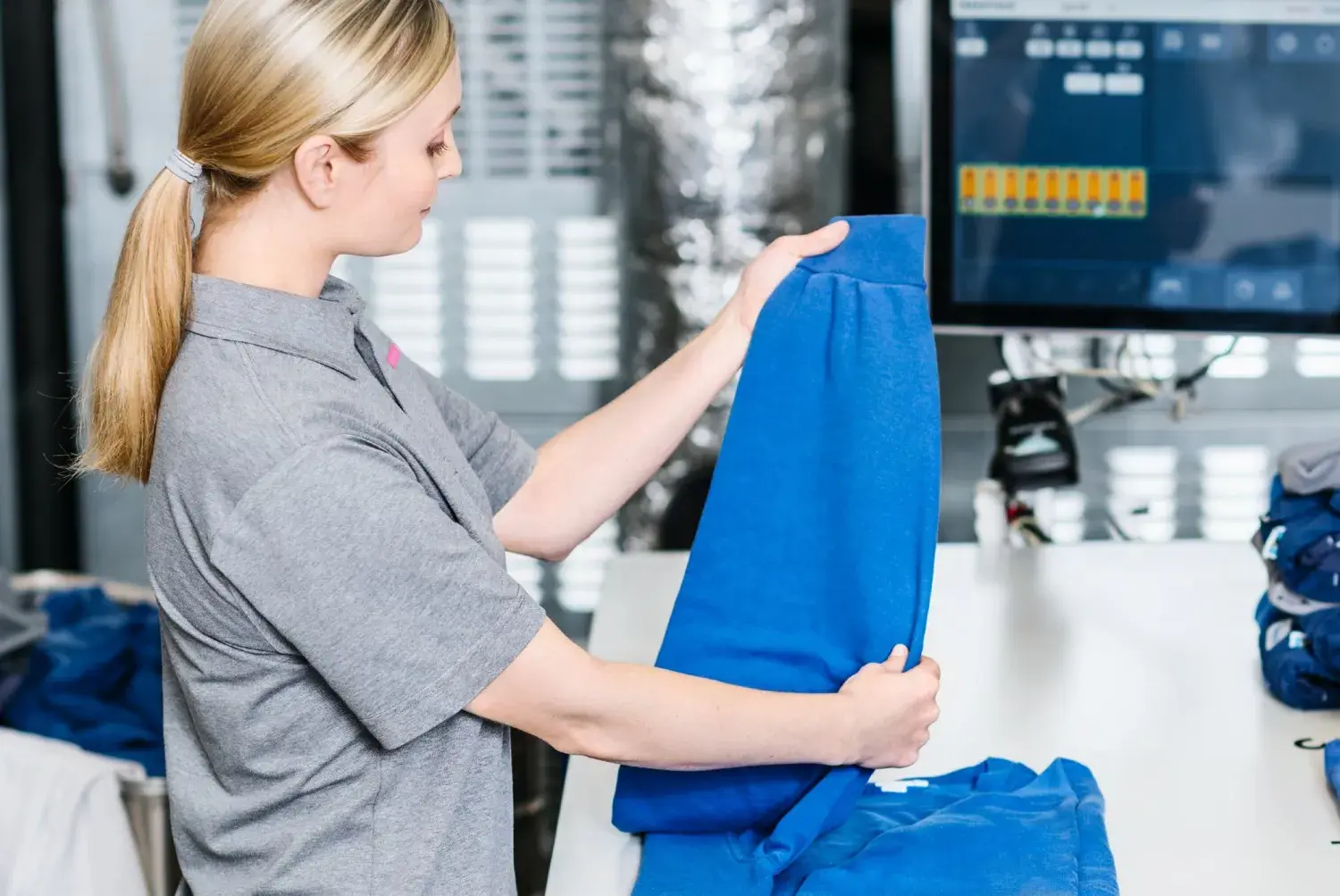As part of the "Circular Advantage Study", the sustainability experts at CWS were able to determine how many greenhouse gas emissions the circular business model saves compared to the so-called linear model. Among other things, CWS textiles stand out for their durability and sustainable production.
According to Tobias Steffen, the fact that the biggest climate protection lever for CWS lies in the use phase of clothing is primarily linked to its manufacture. It’s no secret that the vast majority of greenhouse gases in the textile industry are generated in the upstream value chain. The same also applies for cotton and polyester, which are used in the CWS collections studied.
Polyester in particular is a double-edged sword for the climate. On the one hand, its production requires large quantities of resources and energy. On the other hand, it is very resilient and makes clothing long lasting – and therefore reusable. “Our hypothesis was that the climate benefit would be maximised by extending the period of use,” said Tobias Steffen. “This is one of the fundamental logical elements of the circular economy: the longer I use clothes, the less frequently I have to make new ones. And items that don’t need to be produced don’t create emissions. As such, you need fewer products and therefore cause less CO2 whilst still offering the same service.
Clothing longevity is essential
Polyester in particular is a double-edged sword for the climate. On the one hand, its production requires large quantities of resources and energy. On the other hand, it is very resilient and makes clothing long lasting – and therefore reusable. “Our hypothesis was that the climate benefit would be maximised by extending the period of use,” said Tobias Steffen. “This is one of the fundamental logical elements of the circular economy: the longer I use clothes, the less frequently I have to make new ones. And items that don’t need to be produced don’t create emissions. As such, you need fewer products and therefore cause less CO2 whilst still offering the same service.
Although polyester is an emission-intensive material to manufacture, it saves CO2 during the product life cycle thanks to properties such as durability and relatively quick drying after washing. However, if you are looking for levers to reduce emissions, you can already start in the supply chain.
Certified and sustainable materials
Last year, the product management team at CWS Workwear made sure to purchase materials that are as sustainable as possible when choosing fabrics for the production of workwear: already today, more than half of the fabrics purchased are certified according to Oeko-Tex and come from environmentally friendly sources.
